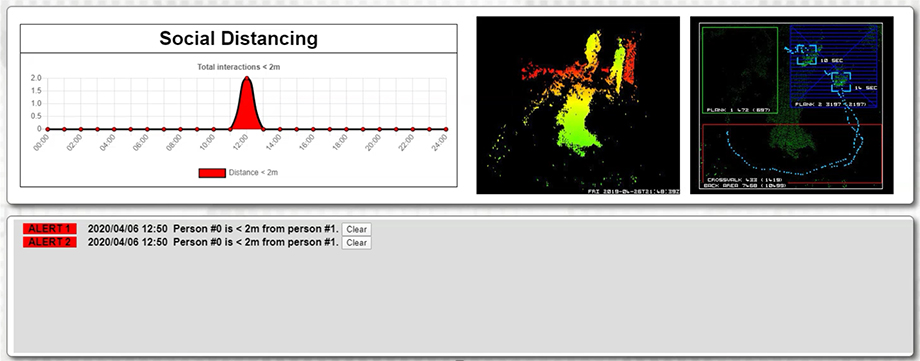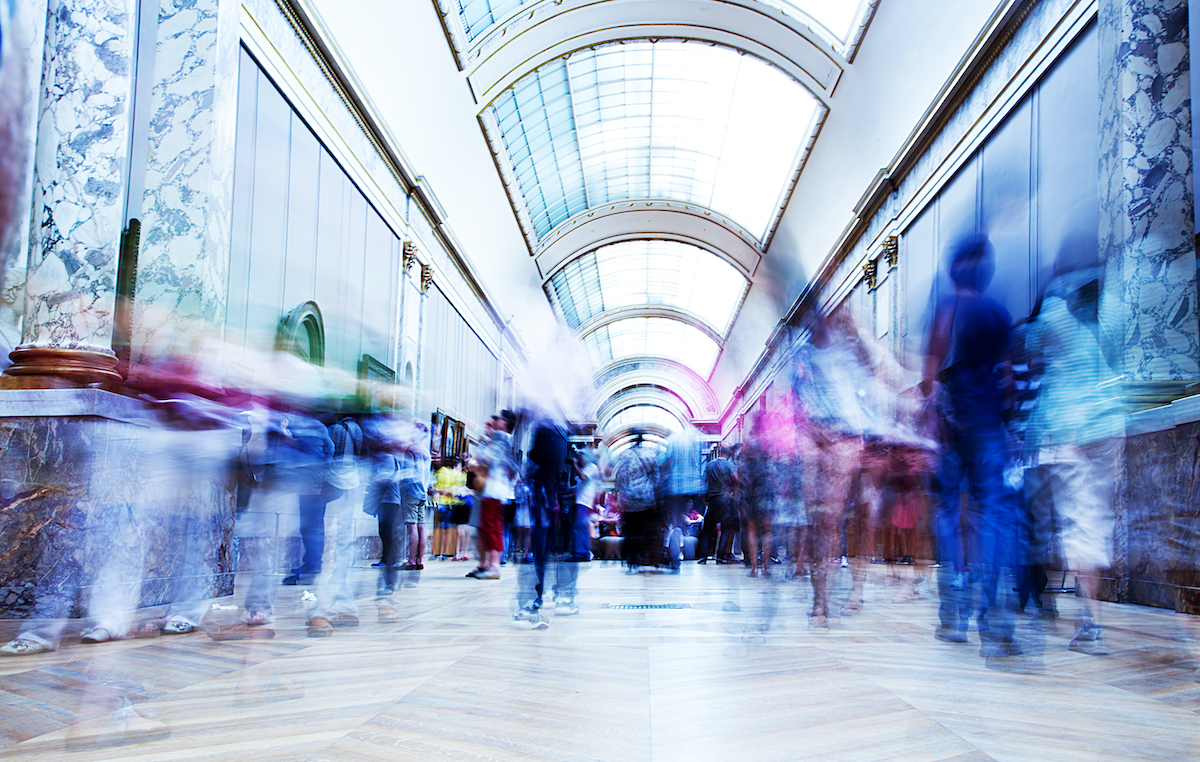How Infrared Video and 3D Lidar Technologies Can Help Flatten the Coronavirus Infection Curve
The COVID-19 coronavirus and the human suffering it has wrought are rapidly changing the way we live and work. In the near term, staying at home and practicing social distancing are vital to ‘flattening the curve’. We must all do what we can to protect the most vulnerable, and to bring closer the day when we can return to work, school and social lives – in the conventional sense – again.
However, when we do venture out of our homes in the coming months, it is likely that a vaccine for the coronavirus will still be months or even a year or more away. As societies loosen social distancing practices, there is a real possibility we could experience further outbreaks unless the institutions and businesses we rely on do all they can to prevent the further spread of the disease.
That is the point when technology – alongside such continued good practices as handwashing – could play a vital role in helping to isolate cases and support a targeted approach to quarantine.
Preparing Today to Prevent Future Waves of the Coronavirus
At Hitachi, we’re leveraging our technology and expertise to find ways to help reduce the risk of further outbreaks and to better safeguard workers, travelers, and those requiring treatment.
As part of our commitment to powering good, and the responsibility that we have as members of the global community and local ones we serve, we’re delivering a variety of innovation solutions to help organizations meet the challenge of COVID-19:
Proactive elevated body temperature detection sensing: One of the widespread symptoms of COVID-19 and other viral infections is elevated body temperature. Technologies like forward-looking infrared (FLIR) cameras can detect the temperature of a person from a distance, so that a passenger, worker, or customer can non-intrusively be screened. Organizations can direct them to secondary confirming tests, or quarantine in line with their internal or regulated procedures and policies to prevent further spread and endangerment of others . Although many people may be asymptomatic, sensing elevated body temperature can be the first step in a layered approach to detection, in response to which an organization can determine the most appropriate way to follow up. We’ve seen these systems in place at airports, but many other organizations can join the fight to prevent the next wave from starting in their facilities.

Automated handwashing monitoring: one of the most effective ways of preventing the spread of this disease, and others is washing one’s hands for at least 20 seconds in accordance with CDC guidelines. 3D lidar technologies, combined with computer vision and machine learning , can learn to detect correct handwashing behavior. Because 3D lidar is using a point cloud of lasers, it is not designed to capture personally identifying information.
Patient monitoring:If someone needs treatment in a care facility, automated patient monitoring, slip and fall detection, and restroom safety monitoring can help already over-stretched care workers attend to more patients than they could otherwise.
Like handwashing monitoring, 3D lidar can be trained to detect behaviors of concern such as falling out of bed, slumping over in the restroom, or slipping on the floor, or social distancing analysis without capturing personally identifying information. Response times can also be hastened, due to the ability to deliver automated real time alerts to staff.

Organizations can combine this data with existing data and perform machine learning analysis to identify trends, potential high-risk areas, or to assist in operations management and auditing.
Companies can also leverage this information to develop policies around what to do when an employee or passenger has a fever, or hasn’t washed their hands, and store and manage this data in a way that’s protected and auditable for compliance purposes.
These technologies are based on Hitachi Smart Spaces and Lumada Video Insights – proven IoT and AI solutions that have been delivering insights to smart cities, airports, factories, transit, retail and more to help improve efficiency and safety around the globe.
The Centers for Disease Control (CDC) provides guidelines across three areas, which you can find here. These recommendations fall into the categories of:
- Reducing transmission in the workplace
- Maintaining healthy business operations
- Maintaining a healthy work environment
The coronavirus outbreak has taught us all that we each have a role to play in protecting human life, as well as our businesses and economy. New solutions such as those described above enable every institution to take a proactive approach to preventing, containing, and mitigating the impact of future waves of the Coronavirus.
Additionally, the recently passed CARES Act provides funding across a variety of industries that can be used for technology upgrades, including these smart spaces projects that can help to prevent the spread of COVID-19:
- $25 billion for transit
- $850 million for local law enforcement
- $30.75 million for school technology
- $10 billion for airports
- $150 billion in direct payments to local governments
Hitachi has access to federal funding partners that help customers to find and gain access to funding programs such as the CARES Act which provides funding for technology upgrades focused on improving safety, security, and in some cases operations. We can help you maximize your chances of writing a successful application, and ‘reprogram’ existing funding towards these safety and operational technology projects.
To learn more, check out this federal funding webinar here.
If you’d like to learn more about the technology behind these solutions, click here. If you’d like to speak with someone about deploying these solutions at your factory, airport, transit stations, or other facility, please reach out to Hitachi Vantara here.
Thanks for reading and please stay safe and healthy.
Disclaimer: These statements have not been evaluated by the Food and Drug Administration. This product is not intended to diagnose, treat, cure, or prevent any disease. Hitachi Vantara, LLC does not claim to be able to detect fever, infection, disease or any health or medical condition with these solutions, and none of the technology herein is, nor is claimed to be a medical device. This information is not intended to be medical advice and statements have not been evaluated by the Federal Drug Administration.
This article was written by Mark Jules, Global Vice President, Smart Spaces & Video Intelligence, Digital Insights-Americas, Hitachi Vantara and originally it was publisheed here.
Sorry, the comment form is closed at this time.


Pingback: How Infrared Video and 3D Lidar Technologies Can Help Flatten the Coronavirus Infection Curve – IoT – Internet of Things